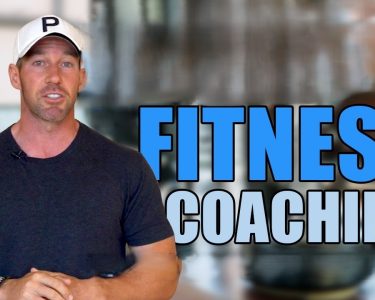Are you tired of putting in hours at the gym, but not seeing the results you desire? If so, it’s time to focus on recovery. Recovery strategies are often overlooked, but they can make all the difference in maximizing your workout results. In this blog post, we’ll dive into effective recovery techniques that will help you bounce back faster and stronger after each workout. Get ready to take your fitness journey to the next level!
What is workout recovery?
After a grueling workout, it’s important to give your body time to recover. Recovery is when your muscles repair themselves and grow stronger. It’s an essential part of the muscle-building process.
There are a few things you can do to speed up the recovery process and get the most out of your workouts. First, make sure you’re getting enough protein. Protein is essential for muscle growth and repair. Aim for 20-30 grams of protein within 30 minutes of your workout.
Second, focus on hydration. Drinking plenty of water helps flush out toxins and prevents dehydration, which can lead to muscle cramps and fatigue. aim for at least 8 cups of water per day.
Third, get enough sleep. Sleep is when your body repairs itself, so it’s essential for recovery. Most people need about 7-8 hours of sleep per night.
Finally, consider using supplements like creatine or branch chain amino acids (BCAAs). These can help speed up the recovery process by providing your muscles with the nutrients they need to grow stronger.
The benefits of effective workout recovery
Working out is tough enough without having to worry about effective recovery strategies. Unfortunately, if you’re not taking the time to recover properly, you’re not giving your body the chance to repair the damage from your workout and rebuild itself stronger. This can lead to injuries, setbacks, and a general feeling of being run down.
Fortunately, there are some simple things you can do to maximize your workout results and help your body recover more effectively. Here are a few tips:
1. Get enough sleep: This one is important for overall health and well-being, but it’s especially crucial if you’re trying to recover from a tough workout. When you sleep, your body releases hormones that promote tissue growth and repair. So make sure you’re getting at least 7-8 hours per night.
2. Eat healthy foods: Eating a balanced diet will help your body get the nutrients it needs to recover from exercise. Make sure you’re eating plenty of lean protein, fruits and vegetables, and whole grains. And don’t forget to stay hydrated!
3. Foam roll or use a lacrosse ball: Self-massage with a foam roller or lacrosse ball can help break up knots and trigger points in your muscles that can lead to pain and stiffness. Taking care of these areas will help you feel better both during and after your workouts.
4. Take an ice bath: This may not sound fun, but immersing yourself in cold water
The best recovery strategies for different types of workouts
There are different types of workouts, and each one requires a different type of recovery strategy in order to maximize results. For example, if you are doing a high-intensity interval training (HIIT) workout, you will need to focus on recovery strategies that help improve your cardiovascular fitness. This could include things like active recovery, where you do a lower intensity version of the same exercise immediately after your HIIT workout, or passive recovery, where you do something completely different that helps your body relax and recover.
If you are doing a strength-training workout, on the other hand, your focus should be on recovering from the muscle damage that has been done. This means taking things like protein supplements and getting adequate rest in order to help your muscles repair themselves.
No matter what type of workout you are doing, though, there are some general recovery strategies that can help improve your results. These include things like staying hydrated throughout the day, eating a healthy diet, and getting enough sleep at night. By following these simple tips, you can help ensure that your body is in the best possible shape to recover from any type of workout.
How to create an effective workout recovery plan
If you’re like most people, you probably think that the key to getting great results from your workouts is to just keep pushing yourself harder and harder. However, what you may not realize is that an equally important part of maximizing your results actually comes from your ability to effectively recover from your workouts.
With that in mind, here are a few tips on how to create an effective workout recovery plan:
1) Get enough sleep: This is one of the most important things you can do for effective workout recovery. When you’re well-rested, your body is able to repair itself more efficiently and you’ll be less likely to experience next-day soreness.
2) Eat healthy foods: Eating healthy foods helps your body to replenish its energy stores and rebuild muscle tissue. Make sure to include plenty of protein-rich foods in your diet as well as complex carbs for sustained energy.
3) Stay hydrated: Drinking plenty of water helps to flush out toxins and keep your muscles hydrated, which is important for both preventing soreness and promoting healing.
4) Use active recovery: Active recovery refers to activities such as easy walking or light stretching after a workout. This helps to increase blood flow and reduce stiffness and soreness.
Conclusion
Maximizing your workout results with effective recovery strategies can help you reach your fitness goals faster. From proper nutrition and hydration to adequate rest and active recovery, there are many strategies that you can use to make sure that you not only recover quickly after a workout, but also get the most out of it. By following these tips, you’ll be able to get more out of each session without having to drastically increase the intensity or duration. As always, remember to listen to your body when exercising so that you don’t overdo it!




